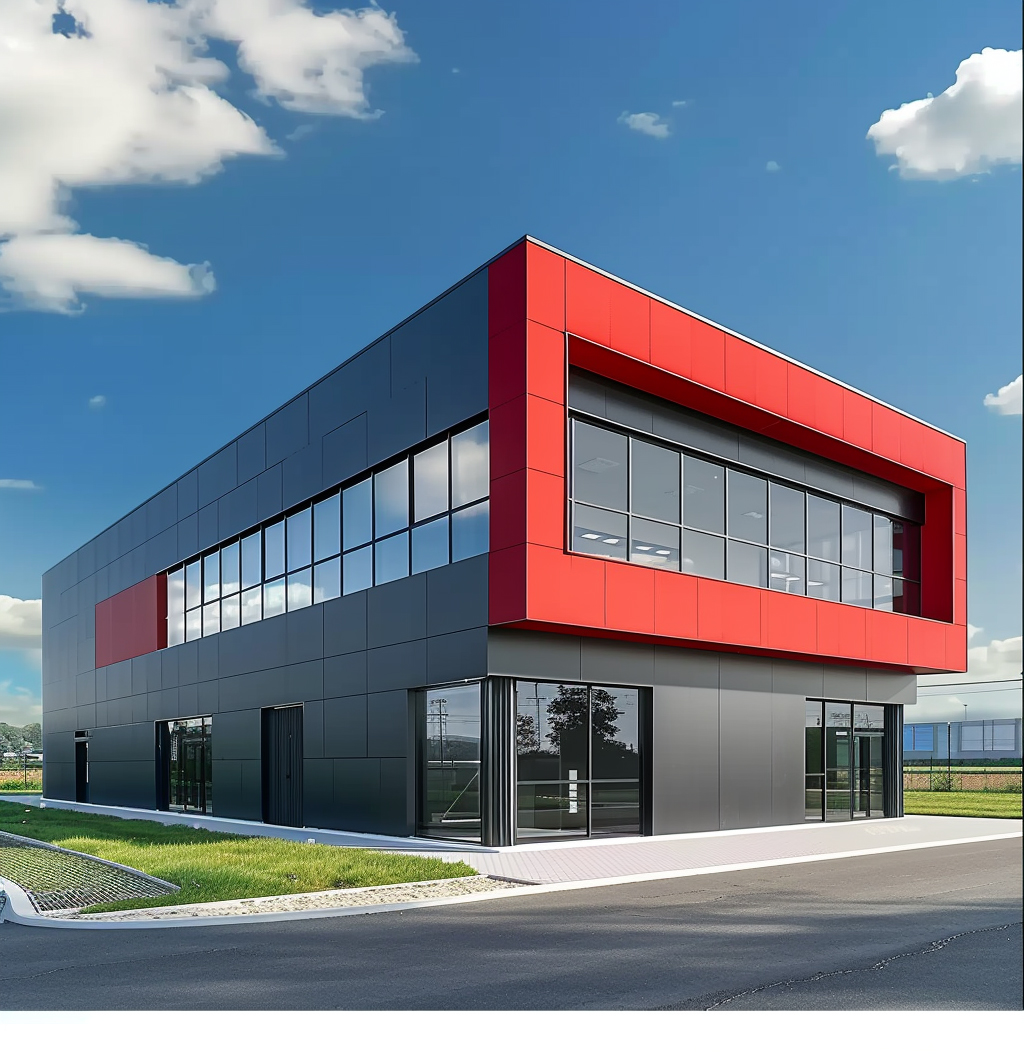What Is A Moment Connection In Structural Steel

What is a moment connection in structural steel?
In the realm of structural engineering, the integrity of a steel structure is upheld by the robustness of its connections. Among these, the moment connection holds a paramount role. Let's delve into the fascinating world of moment connections, understanding their pivotal place in structural steel design.
The Essence of a Moment Connection
A moment connection in structural steel is one that enables the joining of beams to columns or to other beams such that it can transfer bending forces—also known as moments—without significant rotations or deformations at the joint. Such connections are engineered to endure the stresses that cause flexing and are essential in creating rigid frames.
Engineering Behind the Connection
The engineering objective of a moment connection is to provide the continuity of bending resistance across a junction. This contrasts with a simple or shear connection, which allows for a degree of rotation and does not typically resist bending moments. Engineers design moment connections to withstand forces attempting to bend the ends of the members joined at the connection, ensuring the structural rigidity essential in many architectural forms, especially in areas prone to seismic activity or high wind loads.
Fabrication with Precision
The fabrication of moment connections requires precision. Often comprising of flange plates, web plates, and stiffeners, these connections are not only designed to share loads but also to minimize the stresses that could cause potential failure. They can involve welding, bolting, or a combination of both, with the specifics dictated by design criteria, such as load demands and the type of steel used.
Varied Manifestations
In practice, moment connections manifest in a multitude of configurations, each tailored to the particular demands of a project. For instance, the renowned Flange Plate moment connection involves directly welding or bolting the flanges of beams to a column. On another hand, the End Plate moment connection employs a plate at the beam's end, which is then joined to the column flange.
Seismic Considerations
In earthquake-prone regions, moment connections become even more crucial. They must not only transfer moments but also dissipate energy and maintain integrity under cyclic and dynamic loading. To this end, engineers use various seismic design principles such as Strong Column - Weak Beam theory to ensure columns remain elastic under seismic loading, and any plastic hinges form in the beams.
Innovation in Construction
The implementation of moment connections comes with the shared aim of creating structures that are not just functional but can sustain their elegance against the forces of nature. Innovations in building codes, materials technology, and structural analysis have all led to more reliable and efficient moment connection designs.
In sum, the moment connection in structural engineering is a triumph of human ingenuity—a meeting point of steel that converges to sustain the dramatic contours of modern edifices against the forces they encounter. Both unsung heroes and pivotal players, moment connections continue to reinforce our structures, ensuring our crafted spaces remain places of security and delight.
What are other types of structural steel connections?
In addition to the critical role that moment connections play in structural steel design, there are several other types of connections employed to cater to various structural requirements. Each connection type is designed to fulfill specific functions, and choosing the proper connection is vital for the integrity, safety, and cost-effectiveness of a steel structure. Let us explore some of these connection types:
Shear Connections (Simple Connections):
These are the most common types of connections used in steel structures. They primarily resist shear forces and allow for a small amount of rotation, which makes them ideal for connecting beams to columns in a way that facilitates the transfer of vertical loads.
Welded Connections:
Welded connections create a continuous bond between steel members. These can be full penetration welds, which are strong and used in critical areas, or fillet welds, which are applied where the members join at an angle. Welding provides a robust and almost seamless transfer of stress across the connection.
Bolted Connections:
Bolted connections offer a modular approach, as they can be assembled and disassembled. They are versatile and most frequently used in steel construction. Depending on the load, they may utilize different types of bolts such as high-strength friction grip (HSFG) bolts or ordinary bolts.
Gusset Plate Connections:
Gusset plates are triangular pieces of steel used to connect bracing members to supporting structures. These plates distribute loads and can be connected via bolting, welding, or both. They're often used in truss structures.
Tension Connections:
Designed to resist tensile loads, tension connections are critical in structures like suspension bridges and tower cranes. They ensure that members in tension remain secure and intact under load.
Splice Connections:
When steel members are too long for transport, or if a beam needs to extend over a considerable span, splice connections join two steel members end-to-end. These connections can be bolted or welded and designed to endure both shear and moment forces.
Seat Connections:
These involve a seat attached to the supporting member, on which another steel member rests. Often used in conjunction with other connections, they help in transferring loads and providing additional support to the resting member.
Bracket Connections:
Common in cantilevered systems, brackets can be welded or bolted to a column or wall. They support the projecting steel members and can bear both tension and compression forces.
Flange Plate and Web Plate Connections:
These are used in situations where the orientation of the connected members varies. Flange plates attach the flanges of two members, whereas web plates connect their webs. They are generally welded and can carry both shear and moment loads.
Stiffener Connections:
Stiffener plates are used to reinforce weaker areas of steel members, particularly where they are subjected to concentrated loads. They are directly welded onto the member under consideration, minimizing local buckling and helping to distribute the load more evenly.
Each connection type carries distinct advantages and challenges, with considerations given to the method of load transfer, ease of installation, adaptability, cost, and constructability. The decision about which connection to use is typically dependent upon a variety of factors, including the design requirements, performance during service loads, and the environmental conditions to which the structure will be subjected.
What are the advantages and disadvantages of using shear connections in steel structures?
Shear connections, often referred to as simple connections, play a significant role in steel structures by primarily resisting shear forces and facilitating some rotational movement at the junction of beams and columns. Let’s examine their advantages and disadvantages:
Advantages:
Cost-Effectiveness:
Shear connections generally require fewer materials and less labor to fabricate and erect compared to more complex connections, such as moment connections. This can result in significant cost savings throughout the construction process.
Ease of Installation:
Simple shear connections, which usually involve bolting or welding, are quick and easy to assemble on-site, leading to faster construction times and reduced labor costs.
Design Simplicity:
Shear connections, being less complex than moment connections, are easier to design and detail. This simplicity reduces the chances of errors during the design and fabrication phases.
Flexibility in Construction:
These connections allow for slight rotational movement, providing some flexibility to the structure. This can be particularly beneficial in accommodating small settlements or thermal expansions and contractions.
Tolerance to Misalignment:
The simplicity of shear connections means that they can be more forgiving of minor misalignments during the erection phase, which can be adjusted more easily than in the case of more rigid connections.
Disadvantages:
Lack of Rigidity:
Shear connections allow beams to rotate at the joint, which can result in a less rigid structure. This can be inappropriate for buildings that require stiff joints to resist lateral forces like wind or seismic loads.
Limited Load Transfer:
Shear connections are not designed to resist significant bending moments or axial forces. Therefore, they might not be suitable for the portion of the structure that needs to carry heavy loads or moments.
Potential for Deflection:
Due to their flexible nature, simple connections can result in greater deflections and vibrations under loads, affecting the serviceability of the structure and possibly the comfort of its occupants.
Maintenance Considerations:
Bolted shear connections may require periodic inspection and maintenance to ensure that the bolts remain tight and the connection remains secure, especially if the structure is subject to vibration or varying loads.
Lateral Support Needed:
Beams joined with shear connections generally require additional lateral support to prevent lateral-torsional buckling due to their ability to rotate. This requires careful planning and additional components, such as bracings or shear walls.
In summary, shear connections are widely used in steel construction due to their economic and pragmatic benefits, particularly in structures where high rigidity is not the primary concern. However, for structures that must withstand significant lateral loads or require minimal deflection, more rigid connections might be necessary. The key is to balance the structure’s intended use, load characteristics, and economic considerations to determine the most appropriate connection type.
What are some examples of other types of steel connections used in structural engineering?
In structural engineering, steel connections are vital components that join different elements within a structure, ensuring its overall stability and integrity. Beyond the commonly known shear and moment connections, several other types of steel connections are employed to meet various design and load requirements. Here are some examples:
Gusset Plate Connections:
These connections use a flat plate, typically triangular or rectangular, welded or bolted to members such as trusses, braces, or beams. Gusset plates are instrumental in distributing loads at connection points, especially in truss structures.
Flange Plate Connections:
Used to join beam sections when they are subject to high moments, flange plate connections involve welding plates to the flanges of the beams. This increases the sectional modulus of the beam, enhancing its capacity to resist bending moments.
Splice Connections:
To extend the length of beam or column sections beyond what is transportable or available, splice connections are used to join two steel members end-to-end. Bolted splice connections are common, ensuring continuity over long spans or when replacing damaged sections.
Base Plate Connections:
These connections are used to attach structural columns to concrete foundations. Base plates distribute the column loads evenly to the foundation, and the connection is typically made using anchor bolts and welding.
Fin Plate Connections:
A fin plate is a component that is welded onto the supporting beam or column, with the connecting beam bolting onto the fin plate. This connection is efficient for transferring shear forces and allows for quick and easy assembly.
Web Angle Connections:
Comprising angles welded or bolted to the web of a beam, these connections are employed for simple beam-to-column or beam-to-beam connections. They are effective in transferring shear forces between elements.
Tension Connections:
These connections are designed to resist axial tensile forces. They can include bolted end-plate connections or welded connections, ensuring that structural members under tension remain secure.
Stiffener Connections:
Stiffeners are plates added to the web of beams or columns to prevent local buckling under high stress concentrations, such as those near point loads or reactions. They strengthen the member without significantly increasing its overall size.
Seat Connections:
Used primarily at the supports of beams and girders, seat connections comprise a seated angle component that provides a resting place for the supported beam. They can carry vertical loads and accommodate minor lateral movement.
Sleeve Connections:
These connections are used for aligning and joining two pipe or round columns sections. A sleeve, which is a short section of pipe, is used to encase the ends of the two columns, and welding is performed to secure the connection.
Each type of connection has its specific application, advantages, and challenges, dictated by the structural requirements, load conditions, and the environment in which the structure operates. The choice of connection significantly influences the design's effectiveness, constructability, and durability, making the understanding and selection of appropriate steel connections a critical aspect of structural engineering.
What are the advantages of using gusset plate connections in steel structures?
Gusset plate connections are a common and integral part of structural steel design and have several advantages when used in steel structures, such as in trusses and bracing systems. Below are some key advantages of gusset plate connections:
Load Distribution:
Gusset plates are effective in distributing load among the connected members. This distribution helps to reduce the stress concentrations that would otherwise occur at the point of connection, making the structure more robust against the applied forces.
Versatility:
They can be used in various configurations and orientations, connecting different numbers and types of members, which makes them highly adaptable to complex geometries and various structural designs.
Connection Efficiency:
Gusset plates facilitate the efficient transfer of forces between structural members such as beams, columns, and braces. This is essential in structures that rely on triangulated configurations for stability, such as trusses.
Cost-Effectiveness:
Fabricating and installing gusset plates is generally less expensive compared to other methods of connection since they are relatively simple flat plates that can be readily fabricated and easily connected with bolts or welds.
Simplicity of Assembly:
Installation of gusset plate connections is straightforward since they can be bolted or welded quickly at the construction site, leading to faster erection times and lower labor costs.
Enhanced Stability:
In braced frames, gusset plates can provide additional stability, particularly against lateral loads such as wind or seismic activity. They connect the bracing to the main structure, forming a critical part of the lateral load resisting system.
Field Adjustability:
Gusset plates can be tailored on-site if necessary. Although not an ideal scenario, field modifications can be managed, granting some flexibility during the erection phase of the assembly.
Robustness and Reliability:
When designed and installed correctly, gusset plates are highly reliable. Their robustness adds to the structural system’s overall strength and life span.
Aesthetics:
The industrial appearance of gusset plates can be a design feature in architectural applications. When left exposed, they can enhance the visual interest of the space, adding an element of industrial chic to the structure.
Despite these advantages, there are considerations to be made as well. Gusset plates can be bulky and may contribute to the overall weight of the structure. Their design and the evaluation of their capacity can also be complex, particularly in seismic regions where the connection behavior is critical. It's important for the design professionals to accurately predict the distribution of forces through the connections and ensure that the gusset plates are properly designed and sized to meet the performance requirements of the structure.




